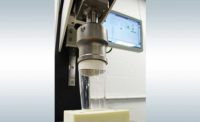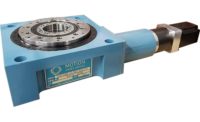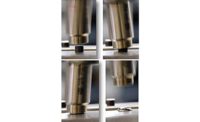Everyone knows that productive assembly lines require hardworking and efficient people, machines or robots. What’s often forgotten, however, is that these lines also require static fixtures that properly secure parts. For many decades, clamps of all types have helped manufacturers consistently meet this latter requirement.
Recently, one automotive Tier 1 supplier began using a manual pull-action clamp to ensure proper positioning of a part within an assembly. Prior to this, workers had to manually position the part due to limited space inside the fixture.
With the custom model 331 clamp from DE-STA-CO, workers easily actuate a pivot mechanism that correctly and consistently positions the part. More importantly, the clamp has increased productivity by 20 percent and improved worker ergonomics.
Another company benefitting from clamping is Pall Corp., which manufactures high-tech filtration, separation and purification products. Last year, Pall began using hydraulic clamping cylinders from Carr Lane Roemheld (CLR) Manufacturing Co. to quicken assembly of stacked filters into a filtration unit.
One cylinder is placed in each corner to secure the three-high stack prior to assembly. The filtration unit measures about 2 feet square, and is used by medical professionals to purify proteins during various procedures.
Some manufacturers rely exclusively on clamps to provide pressure to hold fixtures or workpieces in place. Others complement their use of clamps with various workholding devices such as vises, alignment and lock pins, and brackets. In either case, manufacturers needn’t worry about finding the best clamp for an application. Suppliers offer an ever-expanding variety that can meet any manual or automated assembly challenge.
Time-Tested Toggle
Back in 1936, the Detroit Stamping Co.—today known as DE-STA-CO—introduced the first manual toggle clamp. According to Tom Stimac, North American sales director of workholding for DE-STA-CO, Packard Motor Car Co. came to DE-STA-CO seeking a clamp that offered quicker installation and more consistent holding force than the C-clamps Packard assemblers were using. DE-STA-CO design engineer Frank McKenna created the toggle clamp, which greatly increased Packard’s productivity.
Today, several suppliers specialize in toggle clamps. One is Clamp-Rite, which offers seven clamp types, more than 100 models and a wide range of accessories.
A toggle clamp operates through a system of levers and pivots. Once the clamp spindle contacts the workpiece, clamping force is exerted as the linkage elements stretch or compress. The clamp positively locks when its center pivot moves past the centerline of two other pivots and contacts a stop.
Toggle clamps remain locked even in the absence of air or fluid pressure, and only unlock when the assembler releases the toggle by moving the handle. The clamp’s reliable locking capability is very beneficial to manufacturers that transport parts over a manned station.
Most toggle clamps used for assembly feature a handle that locks in the vertical or horizontal position. Some, like the pull-back toggle clamp, have a handle that locks in the down position. This clamp features a C-shaped frame, jaws that open 90 degrees and a flanged body that easily fastens to the workpiece.
Other popular toggle clamps include edge, hook and plier. Edge clamps apply force both forward and downward at the same time. Hook clamps pull two parts together, but may require a separate fixed catch.
As for the handheld plier clamp, the assembler squeezes it to actuate its jaws. After positioning the clamp, the assembler can adjust its front screw to properly secure the clamp. Stimac says these clamps are frequently used for adhesive bonding applications.
“Manufacturers in the auto industry really love toggle clamps,” claims Steve Moilanen, vice president of global strategic initiatives for PHD Inc. “OEMs and Tier 1 suppliers use them for welding everything from small tubes for seats, to large body panels.”
The Four Forces
Clamps may be categorized in several ways, but the easiest is by power source: manual, hydraulic, pneumatic or electric. The latter three are for semi- or fully automated assembly processes.
Manual clamps go back several centuries, yet some of the earliest types are still used today. These include mitre, bar, and C-, F- and G-clamps, which are so named because their frames resemble the respective letters.
For bar and letter clamps, a worker places a part between the clamp’s top edge and bottom hole, and tightens a screw until the part is firmly in place. The simplicity of these clamps appeals to many manufacturers, especially those that do low-volume furniture assembly or welding of small metal parts.
Regardless of power source, all clamps act upon the workpiece in one of several ways. In-line clamps feature a plunger that travels in and out to push or pull the workpiece. These clamps lock in the push or pull position and may feature a latch or require a separate fixed catch. OEMs that assemble machines with doors find the latch-type clamps very helpful when needing to keep doors shut during assembly.
Low-profile, hold-down clamps apply downward pressure on the workpiece, and are available in open-arm or solid-arm versions. Open-arm, or U-bar, clamps allow the spindle to be moved anywhere along the work-holding bar. In solid-arm clamps, the spindle stays in one place. Also available is a hold-down clamp with a handle that locks in a diagonal position.
The clamping force of cam-action clamps is generated by the action of a roller on a cam. This action allows components of differing thickness to be clamped without readjustment of the spindle. Because the action applies gentle pressure, these clamps work well on fragile materials such as glass and plastic.
Swing clamps are hydraulic, pneumatic or electric powered. They feature a clamping arm that rotates 90 degrees, then down. Manufacturers like that the arm’s swing action minimizes obstruction in the workspace, and makes loading and unloading of parts quick and easy. As a result, the clamps enable high and repetitive production. They also accommodate a wide range of part sizes, and can withstand welding or dirty environments due to a piston that retracts during clamping.
CLR’s C swing clamps feature a hinged mounting pad that bolts permanently to a fixture, allowing them to swing clear for workpiece loading. The ball end of the body screws into the foot, which can rotate and pivot up to 20 degrees. A four-prong knob provides quick tightening and high torque.
Manual clamps are reserved for low-volume applications because they take longer to install. They are also used for applications in which parts must be held together for a long time, such as fixturing parts while an adhesive cures.
For added versatility, self-centering manual systems enable interior or exterior clamping. These systems are double-acting (hydraulic fluid fed to both sides of the piston) and feature two clamping elements that an operator joins and separates by turning a large lever at the front or back of the unit.
Also available are Carver manual clamps, which are made from high-tensile, heat-treated steel and durable enough for all types of welding applications. The clamps’ jaws can be reversed to provide spreading action. Clamp configurations include C-, bar and T-slot, with holding capacities up to several tons.
The main advantage of manual clamps is they cost significantly less than hydraulic and pneumatic units—sometimes as much as 90 percent less, if they’re low-cost imports. However, there is a downside to such extremely low initial prices: They prevent manufacturers from thinking about the total cost of clamp ownership.
“Low-cost-driven companies do not consider the likelihood of downtime or the need to soon replace tooling due to poor-quality clamps,” says Stimac. “Often times, they’ve also built their fixtures on the cheap. In those situations especially, we urge them to get more-durable manual or other clamps, but sometimes they have no desire to change.”
An equally important limitation of manual clamps, according to David Vilcek, manager of workholding and assembly for CLR, is they often produce a variation in clamping force. He says this can lead to irregular parts and increased scrap.
Hydraulic clamps, which have been around since the early 1950s, produce the greatest force. They are also more stable and move more smoothly than pneumatic ones.
“A great advancement in hydraulic clamps is they now provide operators the ability to easily and quickly change clamping force,” explains Luke Matsuda, midwest sales representative for Kosmek USA Ltd. “But, the clamps still present operators with the challenge of keeping the oil clean. About 90 percent of performance problems are due to dirty fluid.”
Hydraulic LKE high-power link clamps from Kosmek offer high clamping force with a mechanical locking system. Five models are available, providing forces from 1 to 6 kilonewtons. The clamps are very small (0.5 to 1.9 kilograms) and feature an energy-efficient compact cylinder that uses very little oil. According to Matsuda, the clamps also have high holding force, which is the force that endures load.
In 2013, CLR introduced the five-model B1827/B18271 series of hydraulic steel clampsthat are compact enough for use in narrow recesses. The clamping lever pivots nearly 90 degrees into position for clear loading. Switching pressure to the unclamping port retracts the piston and the attached clamping arm. The clamps have weight capacities of 300, 560, 900, 1,700 and 2,360 pounds, and an integrated monitoring system that verifies clamping and unclamping positions.
Pneumatic clamps came to market shortly after hydraulic models. The appeal of pneumatic clamps for high-volume assembly is three-fold: quickness, cleanliness and cost-effectiveness. Moilanen also says that many pneumatic clamps offer simple plug-and-play installation, field repairability and a modular design.
PHD’s series of pneumatic PLK clamps featurea completely enclosed pin that can withstand dirt and other debris, making them ideal for parts clamping in weld areas. Pin diameters range from 12.5 to 24.5 millimeters, with a 5- or 10-millimeter clamping stroke. An optional weld field immune switch provides consistent position sensing. The clamps may also be used as an end effector, notes Moilanen.
Several options expand the capabilities of Kosmek’s WHE pneumatic swing clamps. For example, operators can use a dual-end rod or an air catch sensor to confirm clamp action. A balance lever lets them clamp workpieces on both sides.
DE-STA-CO’s redesigned 9500 series of pneumatic swing clamps allows direct, side-flange and tapped-hole mounting. The clamp arm now swings 90 degrees on a horizontal plane before moving downward on its clamping stroke. In addition, the clamps feature a shielded piston rod for protection from weld spatter.
Although electric clamps have been around since the late 1980s, they are still not widely used in assembly. The reason for this, according to suppliers, is that most electric clamps are too heavy, large and expensive. Nevertheless, some suppliers do offer them.
CLR has had some success with its B18310 flange-base electric swing clamps, mostly for clean room applications. After some simple wiring to a PLC, the clamps are ready to use. According to Vilcek, they feature integrated position and force monitoring, and provide adequate clamping force—although somewhat less than comparable-size hydraulic models.
The electric PLCE pin clamp from PHD has a simple durable design and produces a clamp force of up to 250 pounds. Units locate and hold workpieces simultaneously. The motor features an integrated controller to protect it from physical and electrical damage.
“Our first electric power clamp came out in 1987,” recalls Stimac. “The clamp was expensive, and the controls were even more expensive. Even though the automotive world talked about wanting to go electric in their plants, it never came to fruition, although we sold some clamps for isolated applications. In the 1990s and 2000s, we introduced our second- and third-generation clamps with similar results: Lots of talk from the end-user community, but no buy in.”






